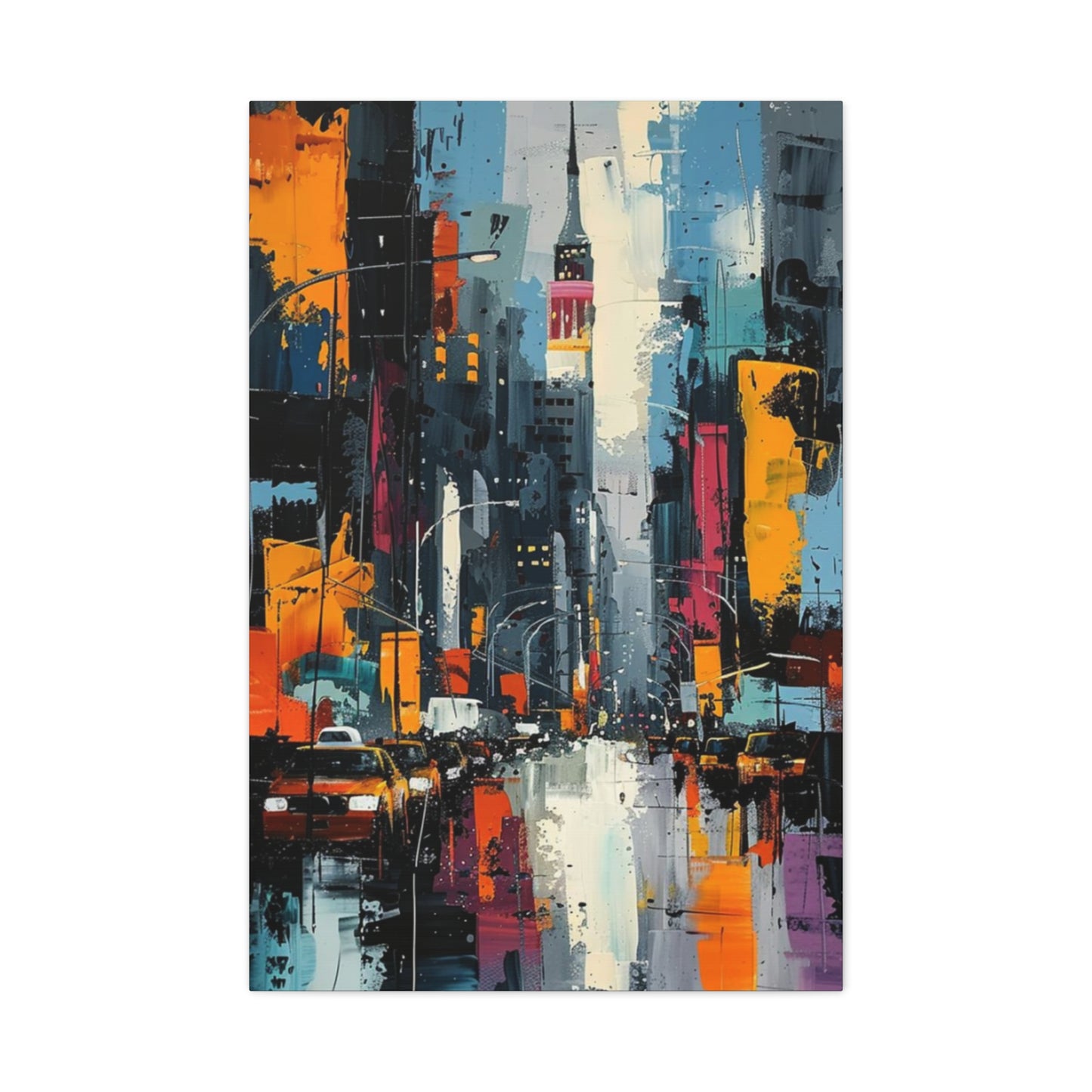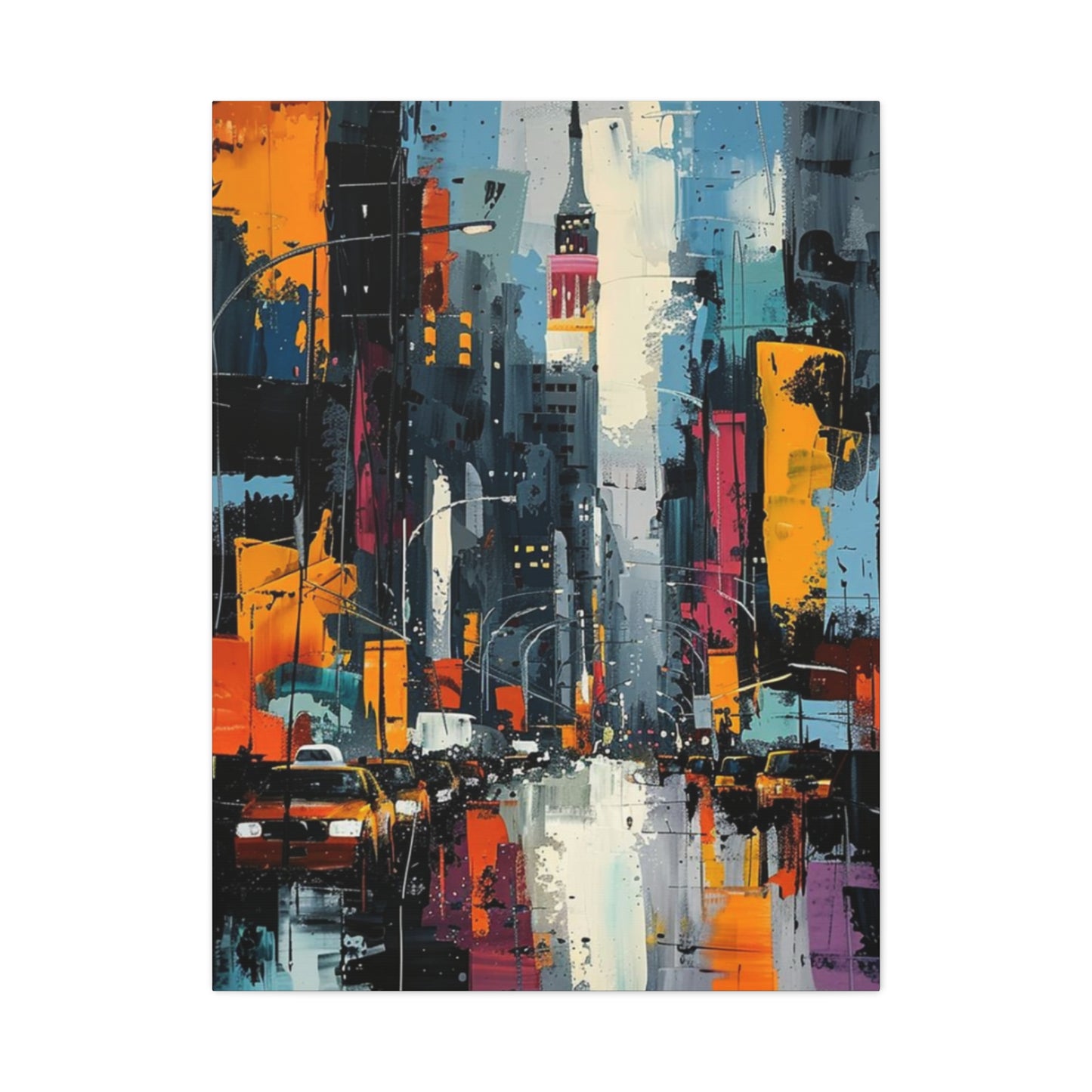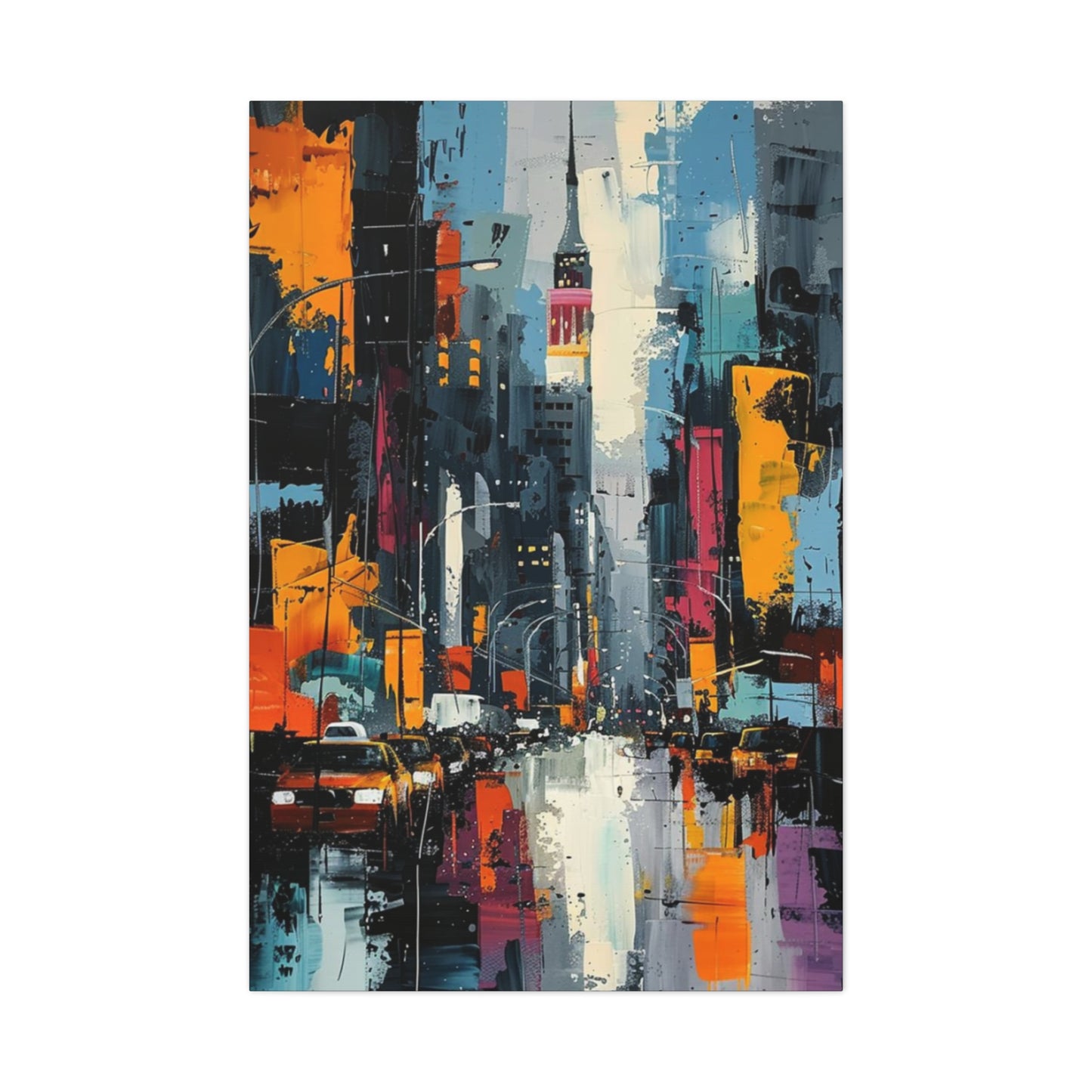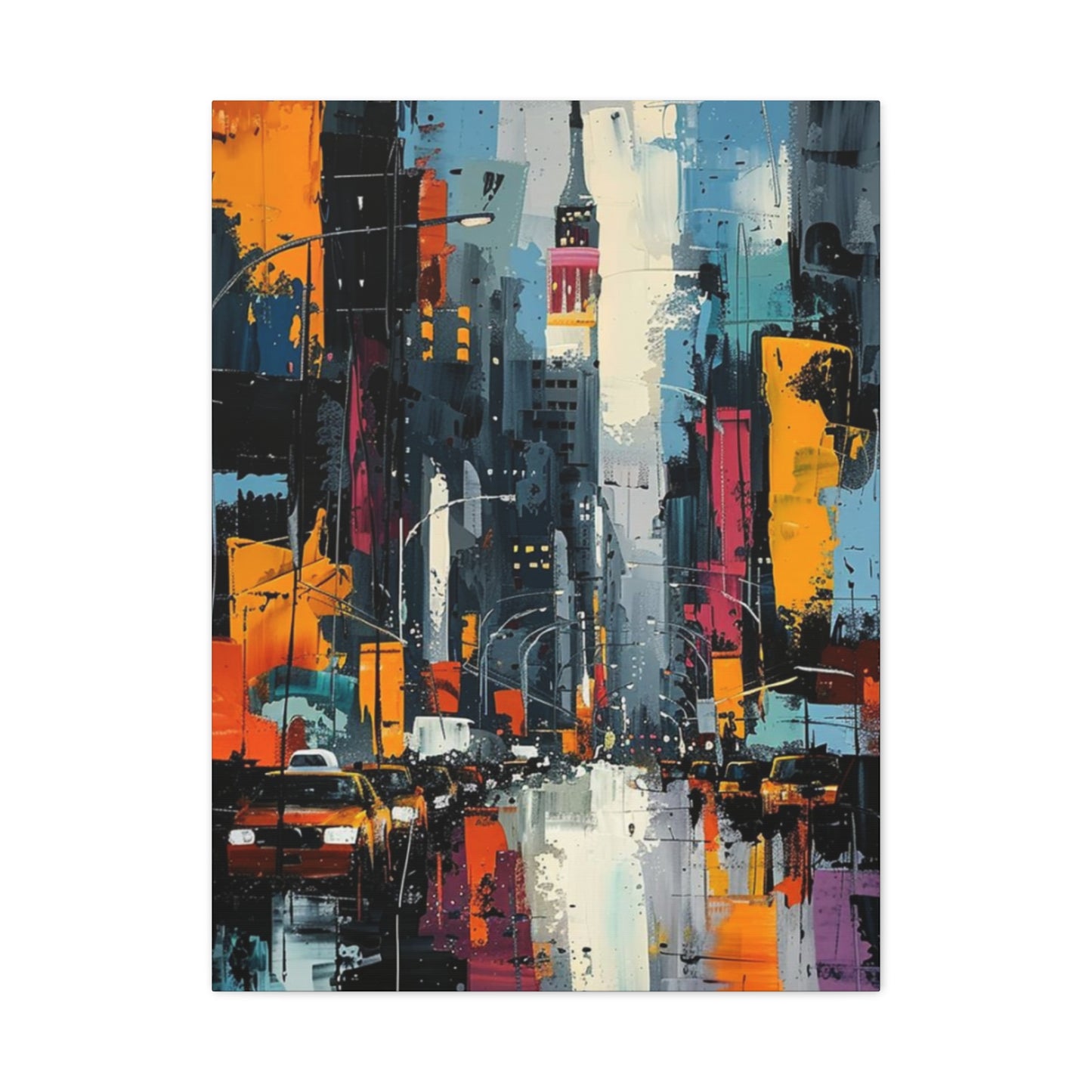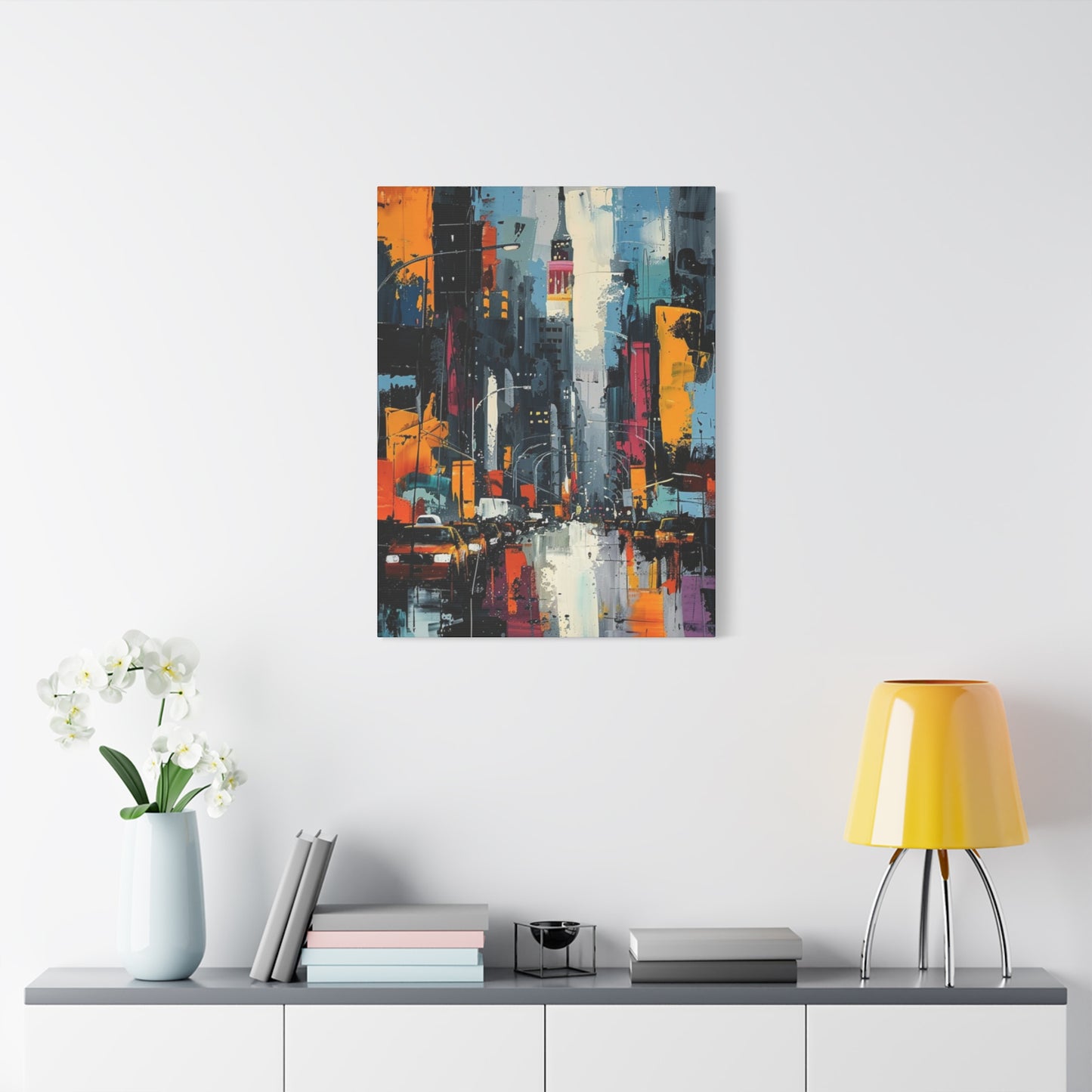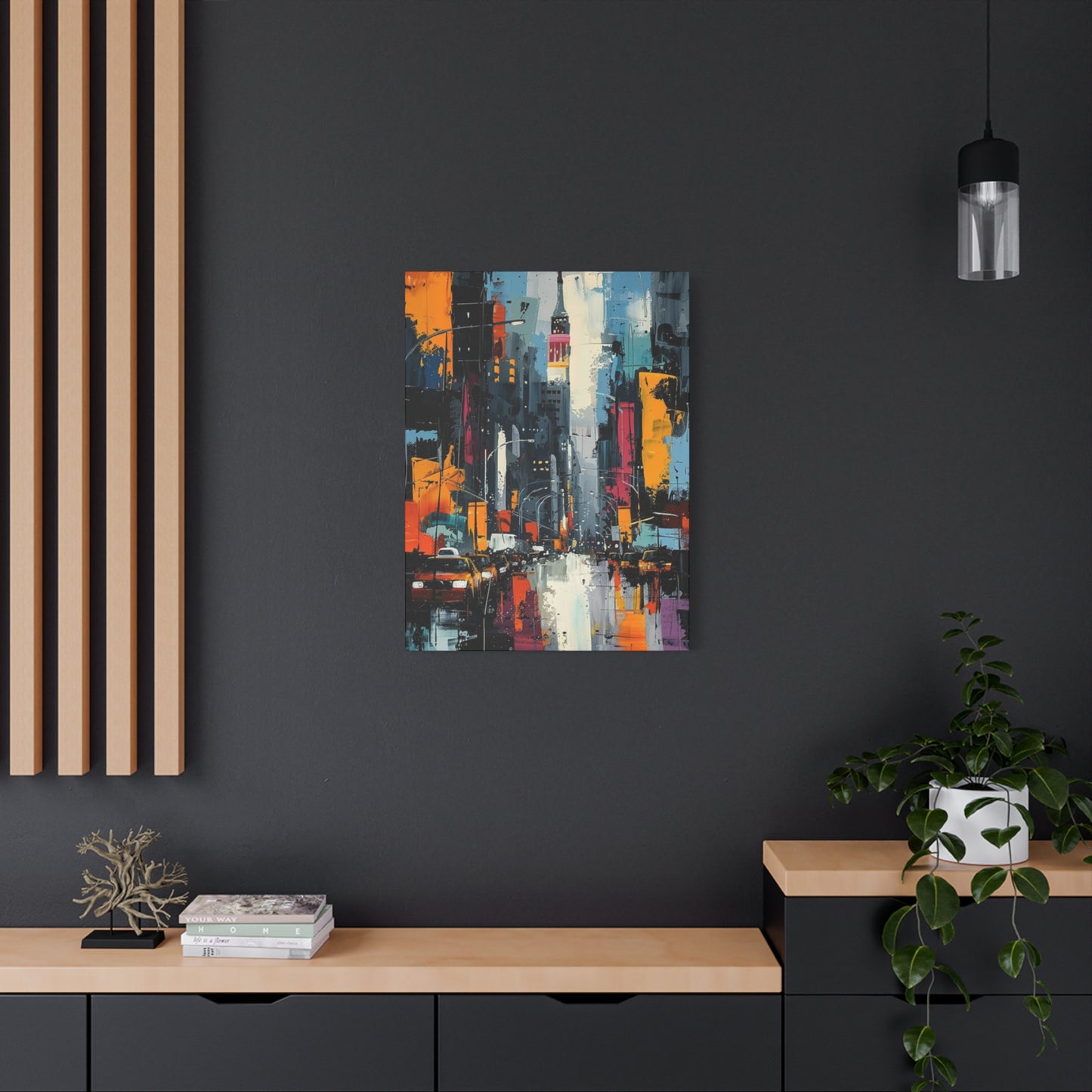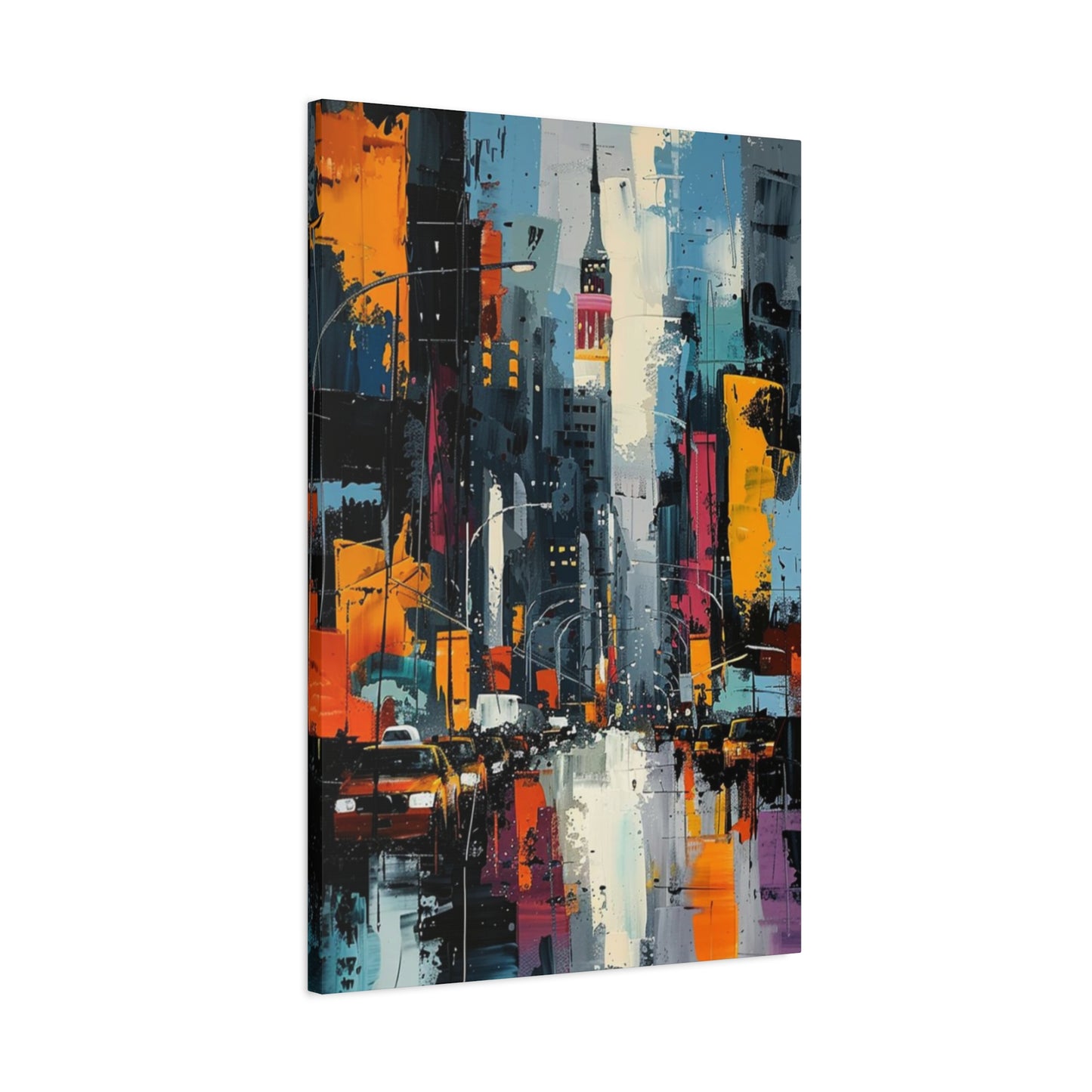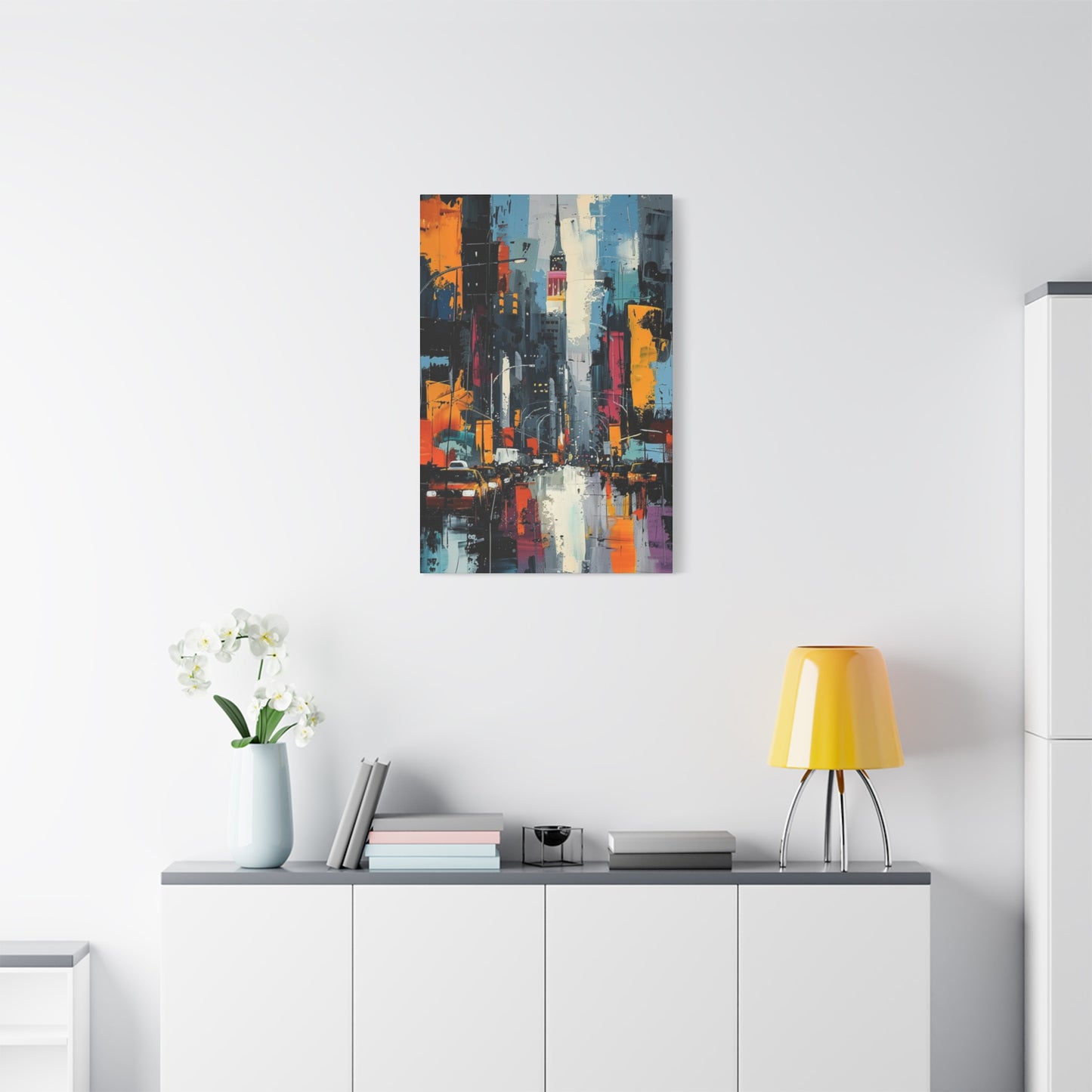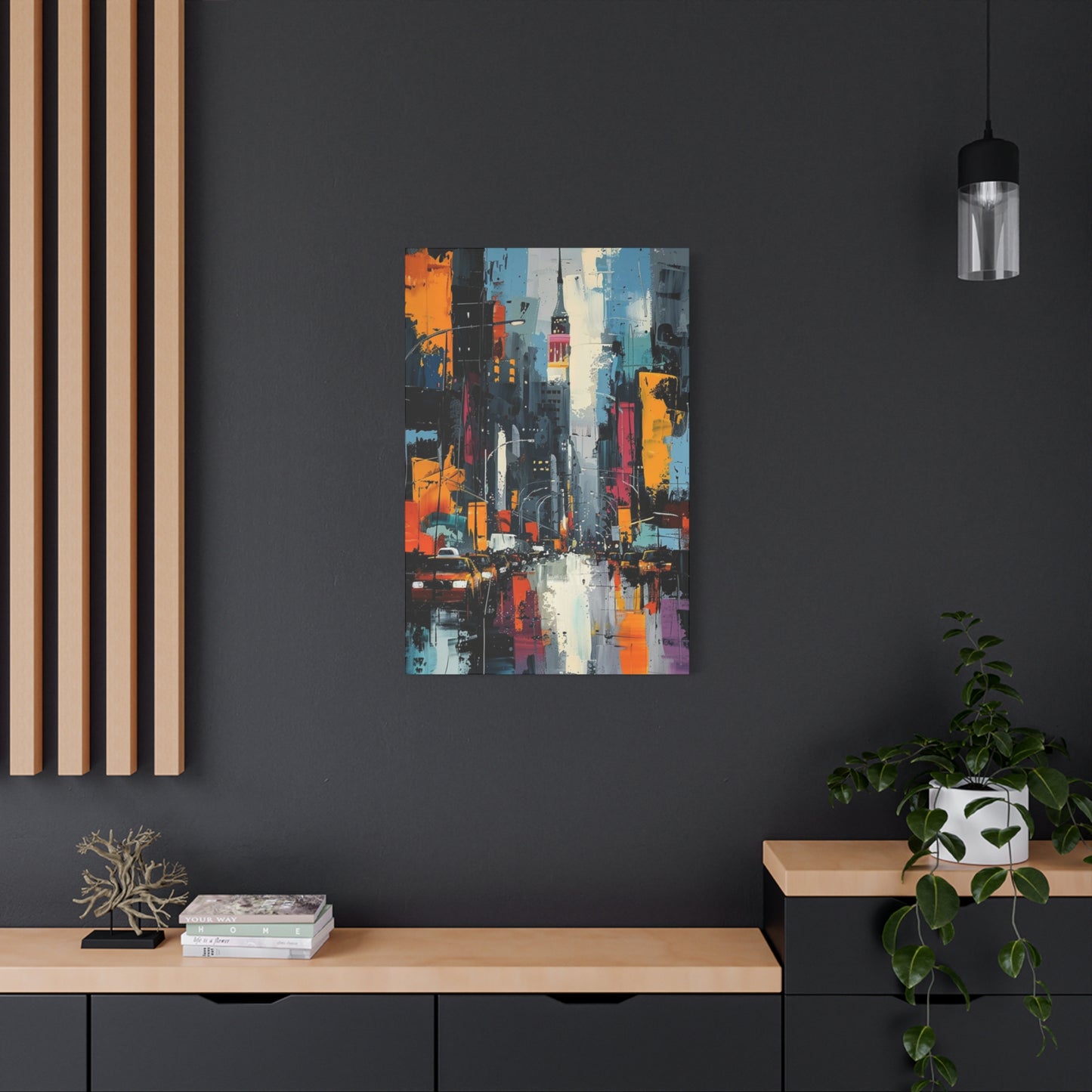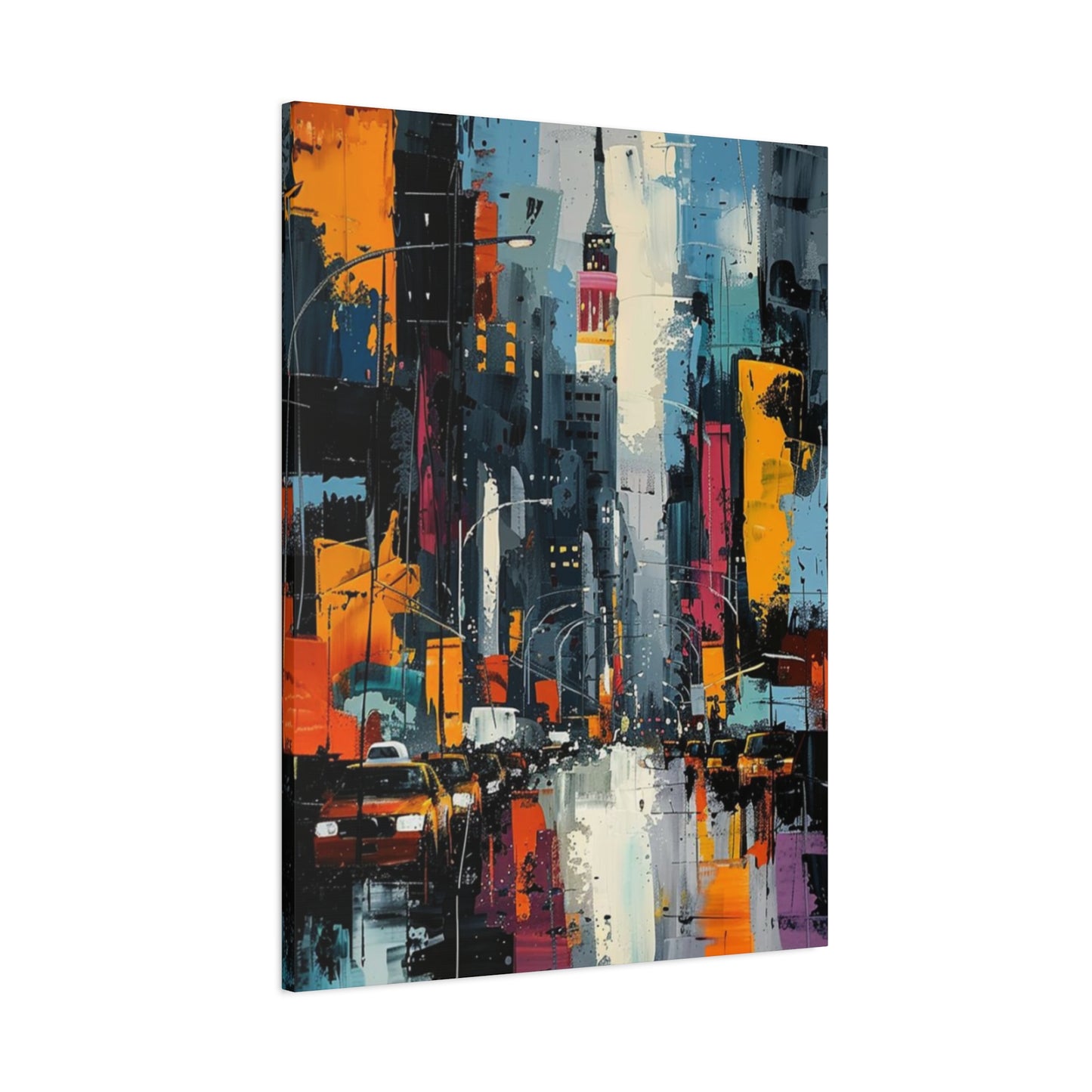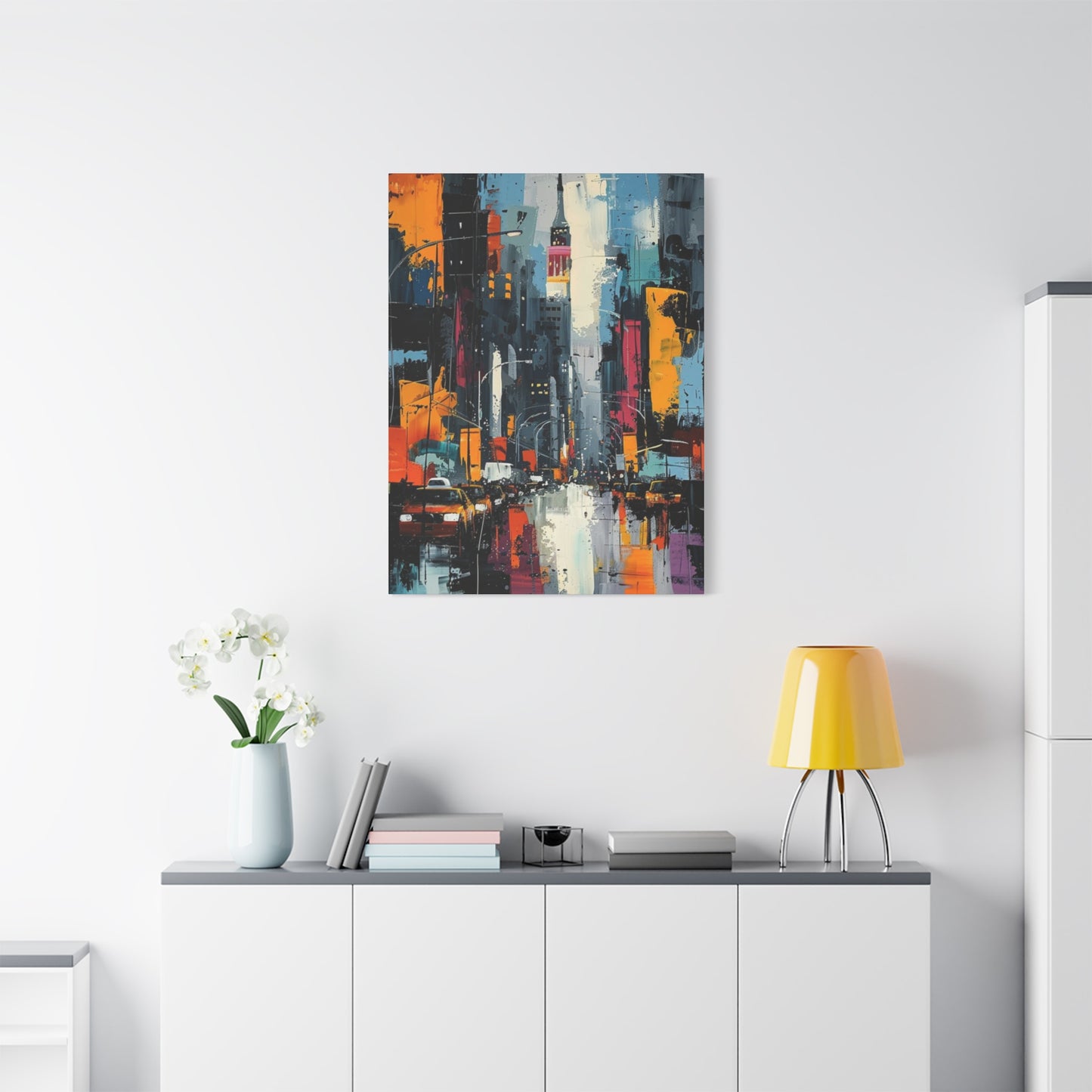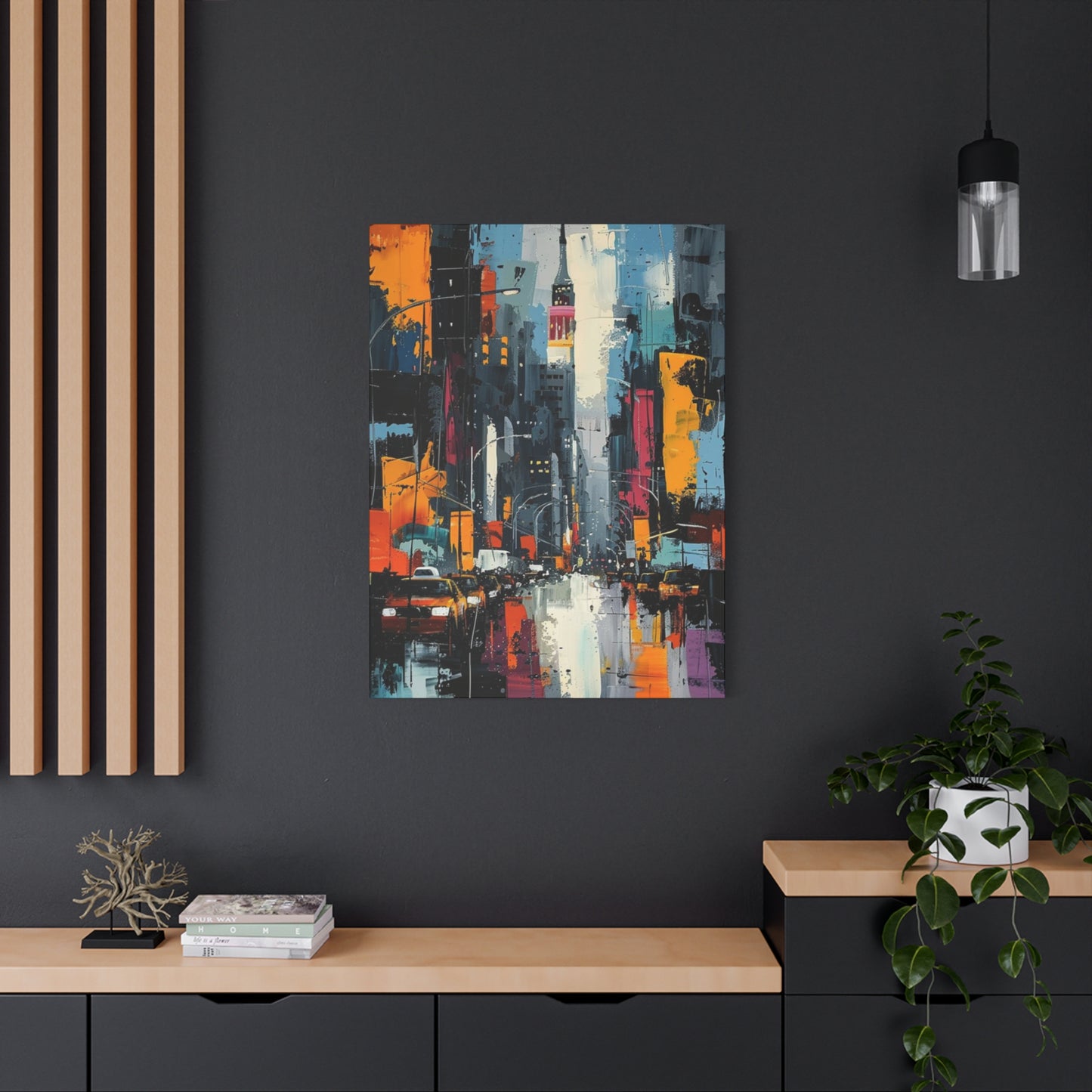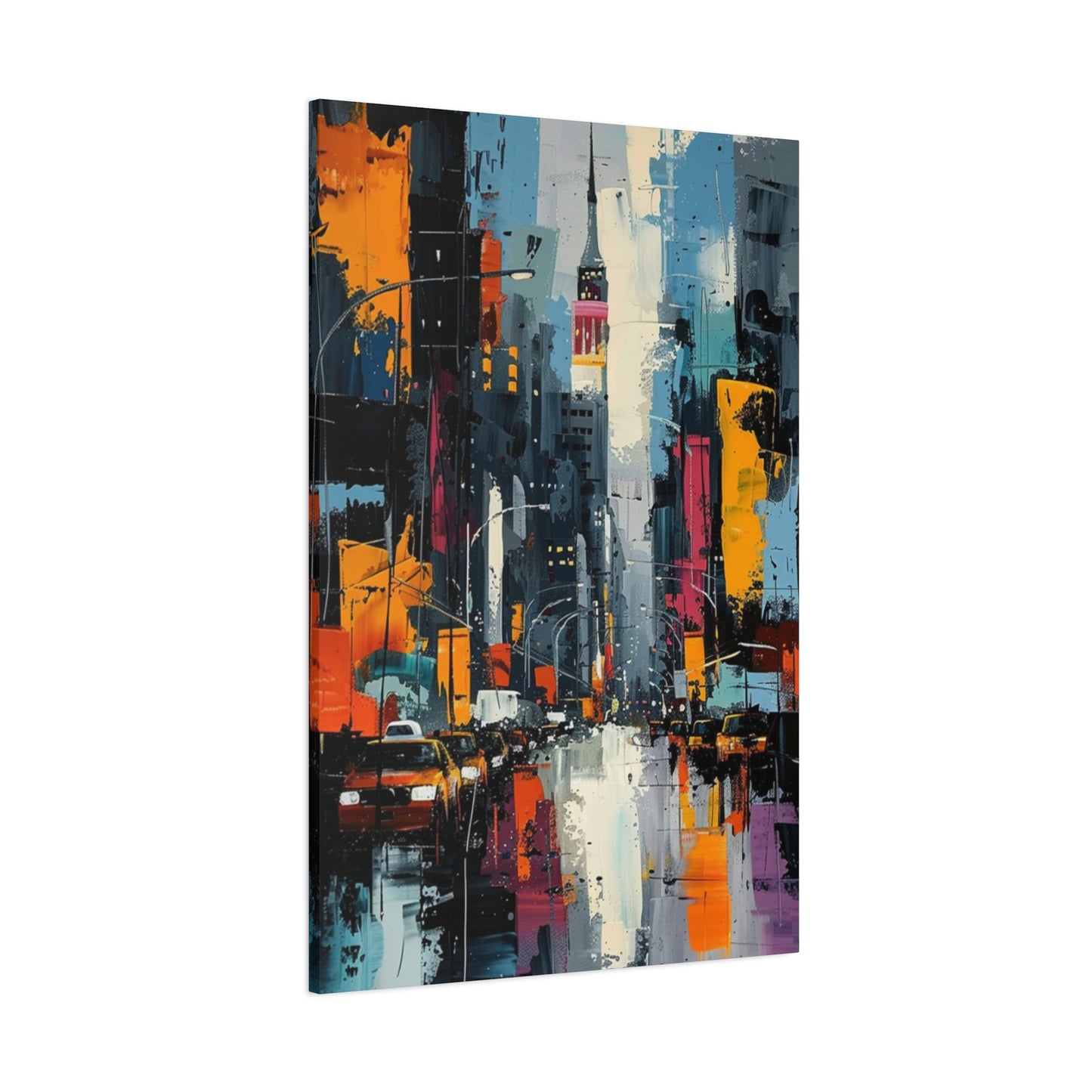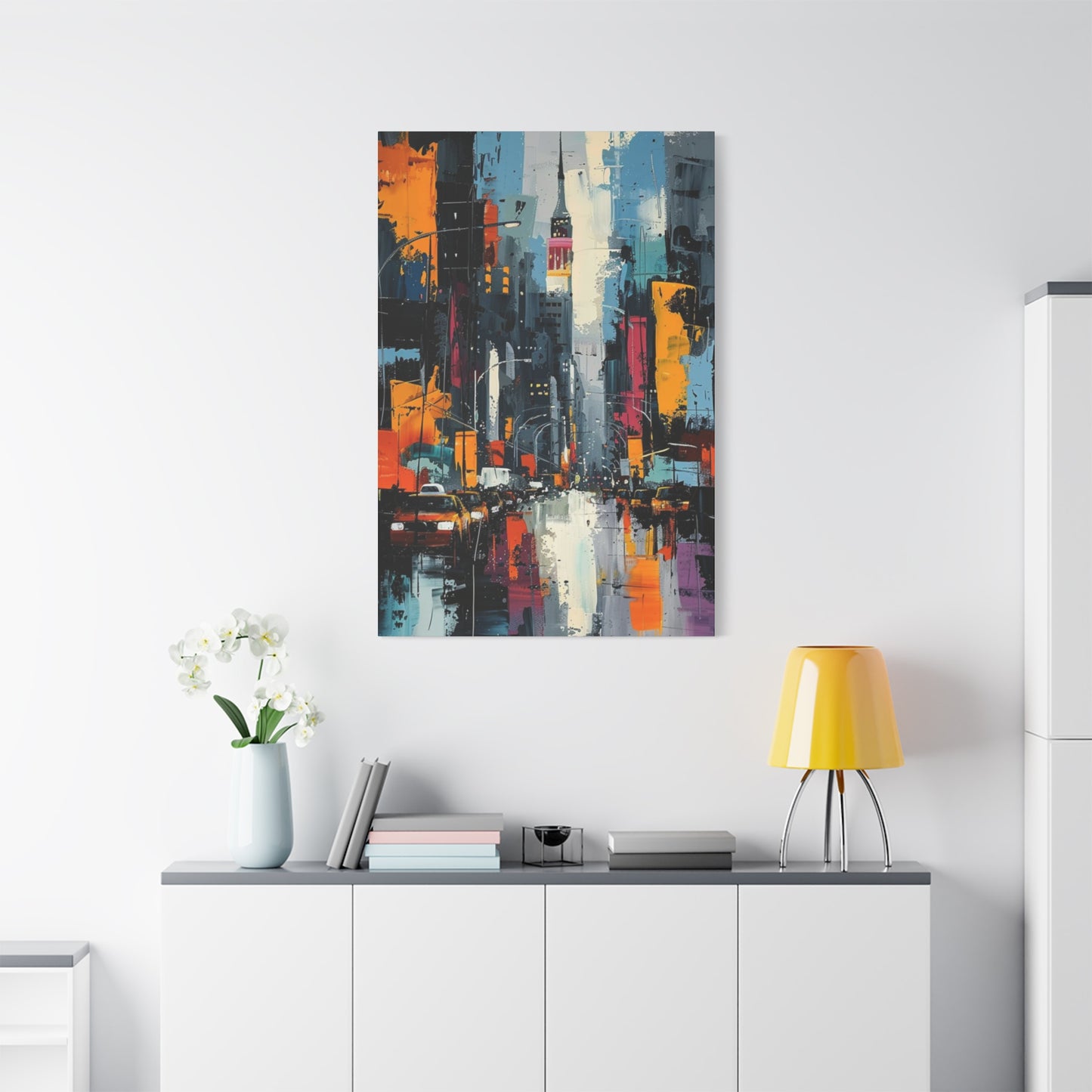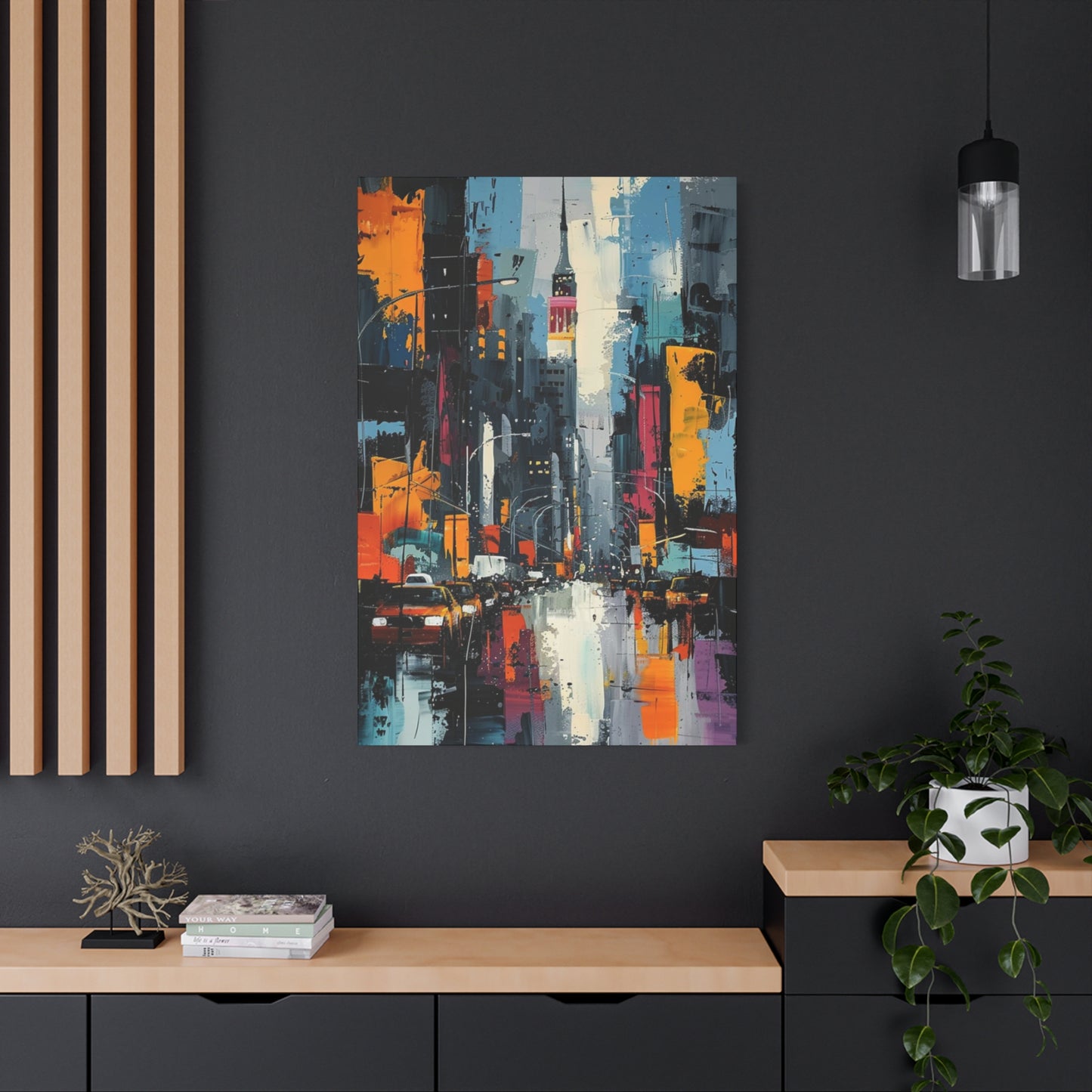Capturing Urban Energy: Contemporary New York City Street Wall Art Paintings
New York City has long been a muse for artists worldwide, and street paintings depicting this iconic metropolis have become highly sought-after wall art pieces. These vibrant artworks capture the essence of bustling avenues, towering skyscrapers, and the unique character that defines the city that never sleeps. From Times Square's neon glow to the tree-lined brownstones of Brooklyn, paintings of New York City streets bring urban sophistication and cultural richness into homes, offices, and commercial spaces.
The appeal of New York City street paintings extends far beyond simple decoration. These works serve as windows into one of the world's most dynamic urban landscapes, offering viewers a chance to experience the energy, diversity, and architectural grandeur of the Big Apple without leaving their living rooms. Whether rendered in photorealistic detail, impressionistic brushwork, or bold abstract interpretations, these paintings transform ordinary walls into captivating focal points that spark conversation and inspire imagination.
Why New York City Street Art Resonates With Collectors
The magnetic pull of New York City street paintings stems from multiple factors that resonate deeply with art enthusiasts and casual collectors alike. This metropolis represents the pinnacle of American urban development, cultural diversity, and artistic innovation. When artists capture its streets on canvas, they preserve moments of a constantly evolving cityscape that holds personal meaning for millions who have lived, worked, or visited there.
For many collectors, these paintings evoke powerful nostalgia and personal memories. Someone who studied in Manhattan might see their morning commute reflected in a painting of a misty Fifth Avenue. A honeymooner recalls their romantic stroll through Central Park when viewing an autumn street scene. Business professionals connect with depictions of Wall Street's financial district, while theater lovers gravitate toward Broadway's bright lights immortalized in paint.
The architectural diversity present in New York City street paintings provides endless visual interest. Artists can showcase the contrast between historic brownstones and modern glass towers, the geometric patterns created by fire escapes zigzagging across tenement buildings, or the way sunlight filters through the grid of streets and avenues. This architectural richness ensures that each painting offers something unique, whether focusing on a single iconic building or capturing the layered complexity of an entire neighborhood.
Beyond nostalgia and architecture, New York City street paintings embody aspiration and achievement. The city symbolizes opportunity, ambition, and the realization of dreams for people worldwide. Displaying such artwork in a home or office space can serve as daily motivation, a reminder of goals, or a celebration of success. The energy captured in these paintings translates into an atmosphere of possibility and forward momentum.
The cultural significance of New York as a global arts capital also enhances the appeal of these paintings. The city has been home to countless artistic movements, from the Abstract Expressionists of the mid-twentieth century to contemporary street artists. Owning a painting of New York streets connects collectors to this rich artistic heritage, making them participants in an ongoing dialogue about urban life, modernity, and artistic expression.
Historical Evolution of New York City Street Painting
The tradition of painting New York City streets has evolved dramatically over the past two centuries, reflecting changes in both artistic movements and the city itself. Early depictions from the nineteenth century showed a relatively modest urban landscape, with artists like John William Hill documenting the city's expansion through detailed watercolors and engravings. These works served as historical records as much as artistic expressions, capturing streets that would soon be transformed by rapid development.
The Ashcan School, emerging in the early twentieth century, revolutionized how artists approached New York City streets. Painters like John Sloan, George Bellows, and George Luks rejected the refined, idealized subjects preferred by academic art institutions, instead finding beauty in everyday urban scenes. Their paintings depicted crowded tenements, snow-covered streets, elevated trains, and working-class neighborhoods with honesty and vitality. This movement established New York street life as a legitimate and compelling subject for serious artistic inquiry.
As modernism took hold in the early to mid-twentieth century, artists began experimenting with how to capture the city's energy through new visual languages. Precisionist painters like Charles Sheeler and Georgia O'Keeffe emphasized the geometric beauty of urban architecture, reducing streets and buildings to their essential forms and creating compositions that celebrated industrial aesthetics. Their work reflected the machine age's influence on both the city's physical structure and the collective imagination.
Abstract Expressionists, many of whom lived and worked in New York, brought a different perspective to urban subjects. While not always depicting streets directly, artists like Willem de Kooning and Franz Kline infused their work with the speed, chaos, and energy of city life. Their gestural brushwork and dynamic compositions captured the psychological and emotional experience of navigating urban space rather than its literal appearance.
Pop Art of the nineteen sixties brought New York streets back into clearer focus, with artists like Robert Rauschenberg incorporating found materials from city streets into their work and Andy Warhol celebrating commercial imagery that dominated urban landscapes. This movement acknowledged the role of advertising, signage, and consumer culture in shaping the visual experience of New York streets.
Contemporary artists continue to find fresh approaches to this enduring subject. Some employ hyperrealistic techniques that capture every reflection in a rain-soaked street, while others use bold colors and simplified forms to convey emotional responses to the urban environment. Digital tools have expanded possibilities, with some artists creating paintings based on manipulated photographs or incorporating mixed media elements that blur boundaries between traditional and contemporary approaches.
Artistic Styles in New York City Street Paintings
The diversity of artistic styles applied to New York City street scenes ensures that collectors can find pieces matching virtually any aesthetic preference. Photorealism represents one extreme, with artists painstakingly recreating every detail of a specific location. These paintings often focus on the interplay of light and shadow, the texture of weathered brick, or the reflections in shop windows. The technical skill required for this style is extraordinary, and the results can be so convincing that viewers initially mistake them for photographs.
Impressionistic interpretations offer a softer, more atmospheric approach to New York streets. Artists working in this style use loose brushwork and vibrant color palettes to capture the feeling of a location rather than its precise details. An impressionistic painting might show the blur of yellow taxis streaming down a rainy avenue or the dappled sunlight filtering through trees in a residential neighborhood. This style emphasizes mood and emotion over accuracy, allowing viewers to project their own experiences onto the scene.
Abstract expressionist approaches to New York street scenes focus on conveying the energy and rhythm of urban life through color, gesture, and composition rather than recognizable imagery. These paintings might use aggressive brushstrokes to suggest the chaos of rush hour or layered washes of color to evoke the way light and movement blur together in the city. While not depicting specific locations, they capture something essential about the New York experience.
Urban contemporary style blends realism with graphic elements, often incorporating street art influences like graffiti, stenciling, or bold typography. These paintings acknowledge the role of street art in shaping New York's visual culture and often feature high-contrast colors, sharp edges, and dynamic compositions. This style particularly appeals to younger collectors and those seeking artwork that feels current and edgy.
Expressionistic paintings of New York streets prioritize emotional intensity over realistic representation. Artists might use exaggerated colors, distorted perspectives, or dramatic contrasts to communicate their subjective response to the urban environment. A street scene painted in this style might feature unnaturally vivid skies, elongated buildings, or figures rendered as abstract shapes, all serving to heighten the emotional impact.
Minimalist approaches reduce New York street scenes to their essential elements, often employing limited color palettes and simplified forms. These paintings might show the geometric pattern of a street grid from above, the silhouette of a skyline at dusk, or the stark beauty of a single street corner. This style creates contemplative, sophisticated pieces that work well in modern interiors.
Mixed media paintings incorporate various materials and techniques, combining traditional paint with collage elements, found objects, newspaper clippings, or digital prints. This approach allows artists to add layers of meaning and texture to their work, creating complex pieces that reward close examination. A mixed media New York street painting might include actual subway maps, vintage advertisements, or three-dimensional elements that extend beyond the canvas surface.
Iconic New York City Streets Featured in Paintings
Certain streets and locations in New York City appear repeatedly in paintings due to their iconic status and visual appeal. Times Square ranks among the most frequently depicted, with its overwhelming sensory experience of neon lights, massive digital billboards, and surging crowds. Artists are drawn to the challenge of capturing this almost abstract environment where commercial imagery dominates every surface and the energy feels electric even in a static painting.
Fifth Avenue provides rich subject matter throughout its length, from the luxury retailers near Central Park South to the Empire State Building's commanding presence. Paintings of this street often emphasize its role as a symbol of elegance and commerce, with artists capturing everything from holiday window displays to the parade of pedestrians navigating its wide sidewalks. The avenue's tree-lined section along Central Park offers particularly appealing scenes with the contrast between natural greenery and urban architecture.
Broadway winds through Manhattan and features prominently in paintings that explore the city's theatrical heritage. Artists depict the Theater District with its marquee lights and crowds gathering for evening performances, creating images that capture both the glamour of show business and the gritty reality of the urban environment. The street's history as a Native American path that became the city's main thoroughfare adds layers of meaning to these paintings.
Wall Street and the Financial District provide dramatic architectural subjects with their concentration of historic buildings and modern towers. Paintings of this area often play with perspective, emphasizing the canyon-like quality created by tall buildings lining narrow streets. The symbolic weight of this location as the center of global finance adds significance to these works, making them popular choices for corporate settings.
SoHo's cobblestone streets and cast-iron architecture offer visual appeal that artists celebrate in countless paintings. The neighborhood's transformation from industrial zone to arts district to shopping destination provides narrative richness. Paintings often capture the distinctive fire escapes, the play of light on historic facades, or the bustling street life that gives the area its character.
Brooklyn neighborhoods have gained increased attention from artists, with streets in DUMBO, Williamsburg, and Park Slope appearing in contemporary paintings. These locations offer different aesthetics from Manhattan, with more residential character, local businesses, and community atmosphere. Paintings of Brooklyn streets often emphasize the borough's artistic culture and its role as home to countless creative individuals.
Central Park and its surrounding streets provide a unique subject where nature and urbanism intersect. Artists paint the contrast between the park's greenery and the towers rising around it, or capture moments where park paths transition to city streets. These transitional spaces offer rich compositional opportunities and symbolize the balance between nature and development that characterizes thoughtful urban planning.
Color Palettes in New York City Street Paintings
The color choices artists make when painting New York City streets significantly impact the mood and message of their work. Cool palettes dominated by blues and grays create atmospheric pieces that emphasize the city's concrete and steel character. These colors work particularly well for scenes of the Financial District or Midtown, where glass and metal surfaces predominate. Cool tones can evoke sophistication, modernity, and the sometimes lonely quality of urban life.
Warm palettes featuring reds, oranges, and yellows capture the energy and vitality of street life. These colors appear frequently in paintings of Times Square, sunset views, or autumn scenes where fall foliage adds natural warmth to the urban environment. Warm tones create inviting, energetic paintings that attract attention and generate excitement. They work well for spaces where the goal is to energize and inspire occupants.
Monochromatic schemes using variations of a single color create sophisticated, cohesive paintings with strong visual impact. A painting rendered entirely in shades of blue might capture a rainy evening, while sepia tones can evoke historical nostalgia. These limited palettes force viewers to focus on composition, value, and texture rather than being distracted by color relationships.
High-contrast palettes with dramatic shifts between light and dark areas emphasize the city's theatrical qualities. These paintings might show brightly lit storefronts against dark streets, or the sharp shadows cast by afternoon sun between tall buildings. The contrast creates dynamic, attention-grabbing pieces that work particularly well as large-scale wall art.
Neon-inspired palettes featuring electric blues, hot pinks, and bright greens capture the artificial lighting that defines New York after dark. These unconventional color choices create contemporary, edgy paintings that appeal to younger collectors and those seeking bold statement pieces. The colors reference both the city's nightlife and its role as a center of innovation and creativity.
Naturalistic palettes that accurately represent observed colors create paintings with documentary quality. These works prioritize faithfulness to the actual appearance of a location, allowing viewers to recognize specific streets and appreciate subtle color relationships. This approach works well for paintings meant to commemorate personal connections to particular places.
Analogous color schemes using colors adjacent on the color wheel create harmonious, pleasing paintings. An artist might use various shades of blue, blue-green, and green to create a cohesive dawn scene, or oranges, reds, and yellows for a sunset view. These palettes feel natural and balanced, making them easy to integrate into various interior design schemes.
Seasonal Variations in New York City Street Art
The changing seasons dramatically alter the appearance and mood of New York City streets, providing artists with diverse subject matter throughout the year. Winter scenes hold particular appeal, with snow transforming familiar urban landscapes into softer, quieter spaces. Paintings of snow-covered streets often feature muted color palettes, with white and gray predominating and occasional touches of warm light from windows or streetlamps creating points of visual interest. The way snow accumulates on fire escapes, softens the edges of buildings, and creates texture on sidewalks provides rich detail for artists to explore.
Spring brings renewal to the city, with trees along residential streets bursting into bloom and the quality of light becoming clearer and more intense. Paintings of spring streets often capture this sense of awakening, with artists emphasizing fresh greens, the pink and white of cherry blossoms, and the increased activity of pedestrians emerging from winter's hibernation. The contrast between natural growth and urban hardscape becomes particularly pronounced during this season.
Summer street scenes frequently explore the intense light and deep shadows created by the high sun. Artists paint the shimmering heat rising from asphalt, the vibrant colors of street vendors' umbrellas, and the casual dress and relaxed pace of pedestrians. Summer paintings often feature the most saturated colors and the highest contrast between light and shadow, creating dramatic, energetic compositions.
Autumn provides perhaps the most visually stunning street scenes, with fall foliage adding brilliant reds, oranges, and yellows to tree-lined streets throughout the city. Paintings of autumn in New York often focus on residential neighborhoods where trees are more prevalent, though even concrete canyons of Midtown feature trees that contribute seasonal color. The warm tones of autumn create inviting, nostalgic paintings that remain popular with collectors.
Seasonal weather events like rain, fog, or dramatic cloud formations offer opportunities for artists to create atmospheric paintings that emphasize mood over detail. Rain-soaked streets become mirrors reflecting lights and creating visual complexity. Fog softens buildings into ghostly forms and creates depth through gradual value shifts. These weather-focused paintings capture the city in moments of transformation, when normal activity continues despite environmental challenges.
Holiday seasons inspire paintings that capture New York's festive decorations and special atmosphere. Winter holiday scenes might show elaborate window displays, Christmas lights, or ice skating at Rockefeller Center. These paintings often have a magical quality, emphasizing the city's ability to create spectacle and wonder during celebratory times.
Framing Options for New York City Street Paintings
The frame surrounding a painting significantly influences its overall appearance and how well it integrates with its surroundings. Traditional wooden frames with ornate detailing suit paintings rendered in classical or impressionistic styles. Rich wood tones like walnut or mahogany add warmth and formality, making them appropriate for traditional interiors or spaces seeking a timeless aesthetic. These frames work particularly well with paintings that emphasize historical aspects of New York streets or adopt older artistic styles.
Modern metal frames in black, silver, or gold finishes complement contemporary paintings and industrial-style interiors. Thin metal frames create clean lines that don't compete with the artwork, while wider metal frames can add substantial presence. Black metal frames particularly suit photographs or photorealistic paintings, as they create gallery-style presentation that emphasizes the artwork's documentary quality.
Floating frames create the illusion that the painting hovers within the frame, with a gap between the canvas edge and the frame itself. This contemporary presentation style works particularly well with paintings on gallery-wrapped canvas and adds a modern, sophisticated appearance. The floating effect emphasizes the painting as an object rather than just an image, drawing attention to its physical presence.
Natural wood frames in lighter tones like oak, ash, or maple create casual, approachable presentations that work well in residential settings. These frames add warmth without formality, making them suitable for a wide range of interior styles from Scandinavian modern to rustic farmhouse. Light wood frames particularly complement paintings with warm color palettes or those depicting leafy residential neighborhoods.
White or light-colored frames create fresh, airy presentations that work well with minimalist interiors or spaces with predominantly white or neutral color schemes. These frames allow colorful paintings to stand out while maintaining a cohesive overall appearance. White frames particularly suit paintings with cool color palettes or those emphasizing architectural details.
Ornate gilded frames add luxury and historical reference, working well with paintings that treat New York street scenes in classical or romantic styles. Gold or silver leaf frames create rich presentations suitable for formal spaces or collections emphasizing art historical connections. These frames work particularly well with paintings that reference historical artistic movements or adopt traditional techniques.
No frame or gallery wrap presentation, where the painting extends around the edges of the stretcher bars, creates contemporary, casual display options. This approach works well with modern paintings and eliminates the cost and bulk of framing. Gallery-wrapped paintings can hang directly on walls using simple mounting hardware, making installation straightforward.
Placement Strategies for Maximum Impact
Strategic placement of New York City street paintings maximizes their visual impact and ensures they enhance rather than clutter spaces. Living rooms offer prime locations for these paintings, with the wall above the sofa being a traditional focal point. A large painting centered above a sofa creates a cohesive furniture grouping and provides a visual anchor for the entire room. The painting should be approximately two-thirds the width of the sofa below it to maintain proper proportion.
Entryways and foyers benefit from impactful artwork that sets the tone for the entire home. A painting of an iconic New York street like Fifth Avenue or Broadway creates an immediate impression of sophistication and cultural awareness. These spaces often feature limited wall area, so careful measurement ensures the painting fits comfortably without overwhelming the space.
Dining rooms provide excellent settings for New York street paintings, as the artwork becomes a focus during meals and gatherings. A painting hung on the wall visible from the dining table creates a conversation starter and enhances the ambiance. The artwork should be positioned at eye level when seated to ensure comfortable viewing during meals.
Home offices gain energy and inspiration from urban street scenes. A painting visible from the desk but not directly behind a computer monitor can provide visual breaks during work and serve as motivation. New York street paintings in office settings often emphasize the city's association with ambition and achievement.
Bedrooms accommodate more personal, intimate paintings that reflect the occupant's connection to New York. A street scene depicting a neighborhood where someone lived or a location with personal significance creates meaningful presence. In bedrooms, paintings can be hung lower than in public spaces, as they're often viewed while lying down.
Hallways and corridors provide opportunities to create gallery-style displays with multiple paintings. A series of New York street scenes from different neighborhoods or seasons can turn a transitional space into a destination. Hallways typically require smaller paintings or vertical orientations due to limited wall width.
Commercial spaces like restaurants, hotels, or office buildings use New York street paintings to establish atmosphere and brand identity. These settings often feature larger-scale works or multiple paintings that create cohesive visual programs. Professional installation ensures proper lighting and security in commercial applications.
Popular Artists Known for New York City Street Scenes
Throughout art history, numerous painters have made New York City streets central to their work, creating distinctive visions that have influenced how we visualize the urban environment. Edward Hopper stands among the most iconic, with his paintings capturing the isolation and melancholy within the city's energy. Works like "Early Sunday Morning" depict empty storefronts bathed in morning light, emphasizing both architectural beauty and human absence. Hopper's influence continues to shape how contemporary artists approach urban subjects.
Piet Mondrian's later works, created after moving to New York, show how the city's grid structure influenced his geometric abstractions. "Broadway Boogie Woogie" translates the rhythm and energy of New York streets into a composition of colored squares and rectangles, creating a visual equivalent of jazz music and urban movement. This connection between the city's structure and abstract art opened new possibilities for representing urban experience.
Contemporary street artists like Banksy have brought outside perspectives to New York streets, creating works that comment on capitalism, surveillance, and social issues within the urban context. While primarily working in street art rather than traditional paintings, these artists influence how others approach urban subjects and what stories they choose to tell through their work.
American realist painters including Richard Estes have achieved fame for hyperrealistic depictions of New York street scenes. Estes' paintings of storefronts, reflections, and urban details create images so precise they rival photographs, yet contain subtle manipulations and choices that reveal them as carefully constructed interpretations. His work demonstrates that realism involves interpretation and selectivity rather than mere copying.
Impressionist and post-impressionist artists like Childe Hassam painted New York streets in the late nineteenth and early twentieth centuries, capturing the city during periods of dramatic transformation. His "Flag Series" depicting Fifth Avenue decorated for patriotic celebrations shows how artists document historical moments while creating aesthetically compelling images. These historical paintings gain value both as art and as records of urban evolution.
Contemporary urban landscape painters working today continue the tradition, bringing fresh perspectives shaped by current urban experiences and artistic trends. Artists working in this field often maintain strong social media presences, sharing their process and building followings that support their careers. The democratization of art distribution through digital platforms has created new opportunities for artists specializing in urban subjects.
Self-taught and outsider artists contribute unique visions of New York streets, often emphasizing emotional or psychological experiences over accurate representation. These artists bring perspectives unconstrained by academic training, sometimes resulting in more immediate, powerful expressions of urban life. Folk art interpretations of cityscapes offer naive charm and directness that contrasts with more sophisticated approaches.
Creating Depth and Perspective in Urban Paintings
Painters of New York City streets employ numerous techniques to create convincing three-dimensional space on flat surfaces. Linear perspective, where parallel lines converge toward vanishing points, naturally occurs when painting streets stretching into the distance. Artists emphasize this convergence to create strong depth, with buildings, sidewalks, and traffic lanes all directing the viewer's eye toward distant points. Multiple vanishing points occur in complex urban scenes with intersecting streets and varied building orientations.
Atmospheric perspective uses progressive lightening and cooling of colors to suggest distance. Buildings close to the viewer appear darker and warmer while distant structures fade toward blue-gray and lighter values. This mimics how atmosphere affects appearance in reality and creates depth even in compositions without strong linear perspective. Artists might also reduce detail and contrast in distant elements, further emphasizing their recession into space.
Overlapping creates depth by positioning elements in front of others, establishing clear spatial relationships. Paintings showing multiple layers of buildings, pedestrians at various distances, and vehicles passing in front of storefronts all use overlapping to construct convincing space. Even in more abstract interpretations, overlapping remains an effective depth cue.
Size variation, where identical objects appear smaller at greater distances, reinforces depth naturally. Street paintings might show large foreground figures with progressively smaller people receding into the distance, or nearby buildings towering over distant structures. This size progression feels intuitive to viewers and creates measurable space.
Detail gradation complements atmospheric perspective by showing sharp detail in foreground elements while suggesting rather than rendering distant features. This selective focus mimics human vision and photographic depth of field, creating hierarchy that guides viewer attention. Foreground textures like brick, concrete, or pavement receive careful rendering while background areas remain more generalized.
Value contrast creates depth through manipulation of lights and darks. Strong contrast in foreground elements makes them advance visually while reduced contrast pushes backgrounds away. Paintings of New York streets might show dramatic shadows and highlights on nearby buildings while distant structures flatten into more uniform values. This technique works particularly well in black and white or monochromatic paintings.
Directional lines created by building edges, street markings, fire escapes, and other urban elements guide viewer's eyes through compositions and establish spatial recession. Artists carefully arrange these linear elements to create movement into and through pictorial space. Diagonal lines create particularly dynamic spatial effects compared to horizontal or vertical orientations.
Scale relationships between architectural elements, vehicles, and human figures establish spatial positions and distances. A yellow taxi painted small in scale reads as distant while a large taxi occupies foreground space. Maintaining consistent scale relationships throughout paintings ensures believable spatial construction.
Cultural Significance of New York Street Art
New York City street paintings carry cultural weight beyond their aesthetic qualities, functioning as documents of urban life, social commentary, and expressions of collective identity. These artworks capture moments in the ongoing evolution of one of the world's most influential cities, preserving neighborhoods before gentrification, documenting architectural landmarks before demolition, and recording street life that changes continuously. Future generations may view contemporary street paintings as historical records similar to how we now value paintings of nineteenth-century New York.
The cultural diversity defining New York finds expression in street paintings depicting various neighborhoods with their distinct characters. Paintings of Chinatown capture distinctive architecture, signage, and street activity different from those showing Little Italy, Harlem, or Brighton Beach. These works acknowledge and celebrate the multicultural reality of urban life, showing how different communities shape their surroundings and create unique urban experiences within the larger city.
Street paintings serve as democratic art accessible to people regardless of their economic status or education level. Unlike private collections or museums requiring admission fees, paintings displayed in public spaces or depicted in accessible media allow everyone to engage with artistic interpretations of shared urban experience. This accessibility aligns with democratic ideals and helps build cultural literacy across diverse populations.
These artworks also function as commentary on urban development, gentrification, inequality, and social change. An artist painting a soon-to-be-demolished building makes a statement about preservation and loss. Depicting homeless individuals on city streets raises questions about economic justice. Showing crowds of diverse people sharing public space celebrates community and coexistence. The subjects artists choose and how they render them reveal values and concerns.
New York street paintings contribute to place-making and identity formation for both residents and visitors. Recognizing a painted location creates connection and sense of belonging for those familiar with the place. Conversely, viewing paintings of unfamiliar streets creates curiosity and desire to explore, potentially influencing tourism and economic activity. These artworks participate in constructing the collective imagination of what New York means.
The paintings also preserve memories for individuals who have personal connections to depicted locations. Someone who grew up on a particular street might treasure a painting showing it as they remember, especially if the actual place has changed dramatically. This memorial function makes street paintings deeply personal despite depicting public spaces.
Artistic interpretations of New York streets contribute to ongoing dialogues about beauty, functionality, and the purposes of urban environments. By choosing to paint particular locations and emphasizing certain qualities, artists make arguments about what deserves attention and preservation. Repeatedly painting the same iconic locations reinforces their cultural status while depicting overlooked neighborhoods elevates their importance.
Photography and Documentation Best Practices
High-quality photography of artwork serves multiple purposes including insurance documentation, sale or consignment, online sharing, and personal records. Professional photography produces the best results, with photographers experienced in art documentation understanding specialized lighting, camera settings, and color accuracy requirements. However, careful attention to technique allows competent amateur photographers to produce acceptable documentation.
Lighting for art photography must be even and neutral, avoiding hot spots, shadows, or color casts that misrepresent the work. Natural indirect light from north-facing windows or overcast days provides ideal conditions for photography. Alternatively, professional photography lights positioned at forty-five-degree angles to the artwork create even illumination. Flash photography should be avoided as it creates glare and uneven lighting.
Camera positioning perpendicular to the artwork prevents distortion and maintains accurate proportions. The camera should be at the painting's center height and perfectly parallel to its surface. Wide-angle lenses can introduce barrel distortion that makes straight lines curve, so normal or slight telephoto focal lengths produce more accurate results.
Color accuracy requires attention to white balance settings and potentially using color calibration targets. Photographing a gray card alongside the artwork allows accurate color correction during editing. Some photographers include color checkers in initial shots to establish accurate color profiles.
Resolution must be sufficient for intended uses. High-resolution images support large-format printing and show details clearly while requiring more storage space. Minimum resolution of three hundred pixels per inch at intended reproduction size ensures quality. Multiple resolution versions can serve different purposes.
File format choices affect image quality and utility. RAW format captures maximum information and allows extensive editing without quality loss but requires specialized software. TIFF format provides lossless compression suitable for archival purposes. JPEG format offers smaller file sizes but involves lossy compression that degrades quality with repeated editing and saving.
Editing should correct technical issues without misrepresenting the artwork. Adjustments to exposure, color balance, and cropping correct photographic limitations but should not alter the painting's actual appearance. Excessive editing that changes colors or adds effects misrepresents the work and creates problems for buyers or insurers expecting accurate representation.
Organization and backup of digital files prevents loss of important documentation. Logical file naming systems, consistent folder structures, and multiple backup copies on different storage media protect against data loss. Cloud storage provides off-site backup protecting against local disasters. Regular verification that backup files remain accessible prevents nasty surprises.
Neighborhoods in New York Street Paintings
Certain New York neighborhoods carry particular historical significance that adds meaning to paintings depicting their streets. Greenwich Village paintings often capture the neighborhood's bohemian history, showing the narrow, irregular streets that contrast with Manhattan's typical grid pattern. The area's association with artists, writers, musicians, and social movements from the twentieth century gives paintings of its streets cultural resonance beyond their visual appeal.
The Lower East Side provides rich subject matter with its immigrant history and architectural character. Paintings of this neighborhood might show tenement buildings with fire escapes, narrow streets, and the density of urban life that characterized working-class immigrant communities. The neighborhood's ongoing gentrification adds layers of meaning to contemporary paintings that document change.
Harlem's streets carry the weight of African American cultural history and the Harlem Renaissance, making paintings of this neighborhood participate in broader conversations about race, culture, and urban development. Brownstone streets, historic theaters, and community landmarks appear in paintings that celebrate Harlem's distinctive character and historical importance.
The Meatpacking District has transformed from industrial zone to trendy neighborhood, with paintings capturing either its gritty past or fashionable present. The cobblestone streets and nineteenth-century buildings provide visual interest while referencing economic changes affecting urban spaces. Paintings of this area often emphasize the contrast between historic architecture and contemporary uses.
Financial District paintings engage with American economic history and the concentration of wealth and power in a small geographic area. Historic buildings like Trinity Church contrast with modern towers, while narrow colonial-era streets create dramatic canyons between tall buildings. The symbolic importance of Wall Street adds meaning to these works.
Decorating with Street Scene Paintings
Paintings of New York City streets can rotate seasonally to maintain fresh appearances and acknowledge changing times of year. This approach works particularly well for collectors with multiple paintings or those comfortable with regular rehanging. Winter paintings featuring snow-covered streets, holiday decorations, or bare trees complement seasonal home decorating and acknowledge the current season outside.
Spring paintings with blooming trees, lighter colors, and increased activity create refreshing transitions from winter's darkness. These paintings can be displayed as weather warms, bringing seasonal energy indoors. The renewal and growth associated with spring makes these paintings feel particularly appropriate during this transitional season.
Summer street scenes with bright light, deep shadows, and warm colors enhance the season's energy. Paintings showing outdoor dining, street vendors, or people enjoying warm weather create connections between indoor spaces and seasonal activities outside. The most saturated colors and highest contrasts typically appear in summer paintings.
Autumn paintings featuring fall foliage become focal points during perhaps New York's most beautiful season. The warm colors of changing leaves complement autumn home decorating and create cozy, inviting atmospheres. These paintings often carry nostalgic qualities that suit the season's reflective mood.
Holiday-specific paintings showing Christmas decorations, Thanksgiving preparations, or New Year's celebrations can be displayed during appropriate times, though their utility is limited to specific weeks. These paintings create festive atmospheres but require storage most of the year. Collectors should weigh this limited display period against storage requirements.
Seasonal rotation prevents viewer fatigue and maintains interest in a collection. Paintings displayed constantly become invisible through familiarity while seasonal rotation creates ongoing opportunities to appreciate different works. This approach works particularly well for avid collectors with more paintings than display space.
Practical considerations for seasonal rotation include safe storage for paintings not currently displayed and installation systems allowing easy changes. Picture hanging systems using rails and adjustable hooks simplify changing displays compared to traditional nail or screw mounting. Proper storage prevents damage to paintings awaiting their seasonal display periods.
Corporate and Commercial Applications
New York City street paintings serve important roles in corporate and commercial environments, providing visual interest, establishing brand identity, and creating welcoming atmospheres. Hotels use these paintings to evoke local character and help guests feel connected to the city they're visiting. Lobbies, guest rooms, corridors, and public spaces feature street scenes that serve as orientation tools and decorative elements.
Restaurants and bars create ambiance through carefully selected artwork that reinforces their concepts and target demographics. An upscale steakhouse near the Financial District might display paintings of Wall Street to appeal to business clientele, while a casual cafe in Brooklyn could feature paintings of local streets to celebrate neighborhood character. The artwork becomes part of the overall experience and brand identity.
Corporate offices use New York street paintings to project sophistication, success, and connection to the business capital. Reception areas, conference rooms, and executive offices feature artwork that impresses clients and creates professional environments. Large-scale paintings make particularly strong statements in these settings.
Medical and dental offices benefit from artwork that calms and distracts anxious patients. Paintings of peaceful residential streets or parks provide visual escapes from clinical environments. These settings require artwork that is accessible and non-challenging, avoiding aggressive colors or disturbing subjects.
Retail environments use paintings to create atmosphere and encourage customers to linger. Clothing boutiques, furniture stores, or design showrooms might display street paintings that complement their merchandise and create cohesive brand experiences. The artwork can suggest lifestyles customers aspire to and associate with the products being sold.
Co-working spaces and creative offices embrace urban street paintings that celebrate creativity, innovation, and entrepreneurial energy. These environments often feature bold, contemporary paintings that inspire occupants and create Instagram-worthy spaces that aid marketing efforts. The artwork contributes to company culture and helps attract talent.
Real estate offices and developments use paintings of local streets to sell neighborhood character to potential buyers or renters. These artworks help prospects visualize themselves in the area and create emotional connections that support sales. Developers sometimes commission paintings specifically for model homes or sales centers.
Educational Value and Art Appreciation
New York City street paintings provide excellent educational opportunities for developing art appreciation skills and understanding urban studies. Formal analysis examining composition, color, brushwork, and other technical elements helps viewers understand how artists create meaning and visual impact. Comparing paintings of the same location by different artists reveals how individual vision shapes artistic outcomes.
Historical context study places paintings within broader art movements and historical periods. Understanding that a painting was created during the Great Depression or in the aftermath of September 11th adds layers of meaning. Researching artists' biographies, influences, and intentions deepens appreciation of their work.
Urban planning and architectural analysis using paintings as primary sources helps students understand how cities develop and change over time. Comparing historical paintings with current photographs reveals demolitions, new construction, changing street patterns, and evolving neighborhood character. This visual evidence supports discussions about preservation, development, and urban policy.
Social history emerges from careful examination of street paintings showing how people dressed, what businesses operated, how public space was used, and what technologies were present. Details like automobile models, clothing styles, signage, and street furniture provide rich historical information. These paintings complement written records and photographic documentation.
Cultural studies approaches examine representations of diversity, inclusion, power relationships, and social stratification visible in street paintings. Who appears in the paintings and who is absent? What neighborhoods receive artistic attention and which are ignored? These questions reveal cultural values and biases operating in both artistic creation and consumption.
Technical skill development benefits from studying how accomplished artists solve pictorial problems. Aspiring painters learn by analyzing how professionals handle perspective, create depth, mix colors, or suggest detail without rendering every element. This study supports practical skill development and artistic growth.
Interdisciplinary learning connects art with geography, history, sociology, economics, and literature. Street paintings can launch investigations into numerous subjects, making them valuable educational resources across curricula. This integration demonstrates that art exists within broader cultural contexts rather than in isolation.
Conclusion:
Paintings of New York City streets represent far more than simple decoration or nostalgic memorabilia. These artworks capture the energy, complexity, and constant evolution of one of the world's most influential urban environments. Through varied styles ranging from photorealism to abstract expressionism, artists interpret the visual richness of Manhattan's avenues, Brooklyn's neighborhoods, and every corner of the five boroughs. Each painting offers a unique perspective shaped by the artist's vision, technical approach, and personal connection to the city.
The enduring appeal of these paintings stems from multiple sources. For many, they evoke powerful personal memories of time spent in the city, whether as residents, workers, students, or visitors. The architectural diversity, cultural significance, and symbolic meaning of New York as a center of ambition and achievement all contribute to the resonance these paintings create. They serve as windows into urban life, documents of historical change, and celebrations of human creativity in designing and inhabiting dense urban spaces.
Collectors appreciate New York street paintings for their aesthetic qualities, their investment potential, and their ability to transform living and working spaces. A well-chosen painting becomes a focal point that anchors a room's design, sparks conversation, and provides daily visual pleasure. The painting market offers options at every price point, from affordable prints to significant original works by established artists, making these images accessible to broad audiences while maintaining value for serious collectors.
The technical aspects of creating convincing urban scenes challenge artists to master perspective, atmospheric effects, color relationships, and compositional strategies. The best paintings succeed not through mere copying of reference photographs but through thoughtful interpretation that emphasizes meaningful elements while subordinating or eliminating distracting details. This artistic selectivity transforms documentary record into expressive artwork that communicates the artist's response to the urban environment.
Cultural considerations add depth to these apparently straightforward representations of streets and buildings. The neighborhoods depicted, the people included or excluded, the time periods represented, and countless other choices reveal values and perspectives. Paintings participate in ongoing cultural conversations about urban development, social equality, preservation versus progress, and the relationship between individual and community in dense urban settings.
Technological changes affect how these paintings are created, reproduced, distributed, and displayed. Digital tools expand artistic possibilities while raising questions about authenticity and craftsmanship. Improved reproduction technologies make high-quality images accessible at affordable prices, democratizing art collection while creating challenges for artists seeking to earn livings from their work. The art world continues adapting to these technological disruptions while maintaining appreciation for traditional skills and physical objects.
Environmental and ethical considerations increasingly influence both art production and collection decisions. Artists experiment with sustainable materials and practices while collectors consider the environmental footprints of their acquisitions. These concerns reflect broader cultural shifts toward sustainability and social responsibility that affect virtually every aspect of contemporary life.


















